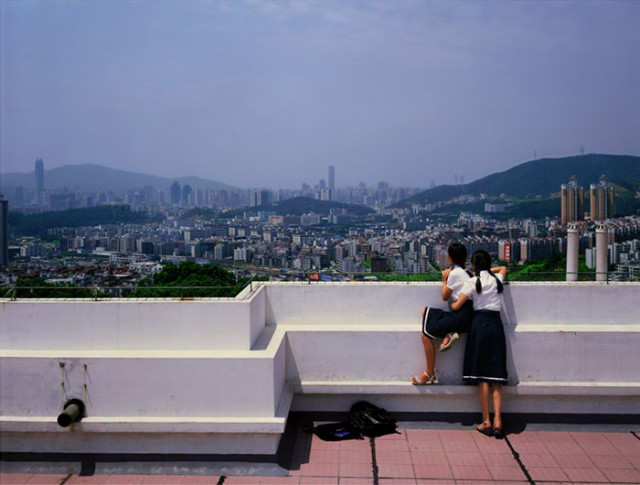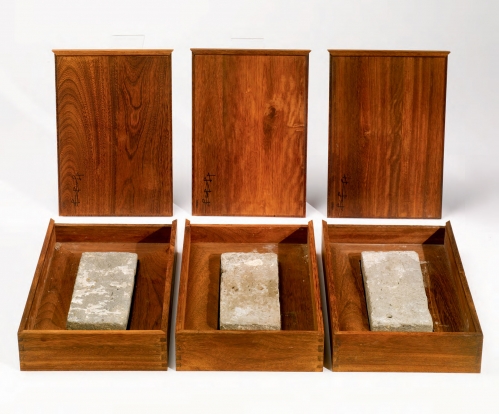
Weng Fen, “Bird’s Eye View: Shenzhen,” C-print, 2002 (collection of Andrew Rayburn and Heather Guess)
CHINESE ART COLLECTION OF ANDREW RAYBURN AND HEATHER GUESS
Whitebox Art Center
329 Broome St. between Chrystie St. & Bowery
Through October 6, free (12 noon – 6:00 Saturday, 12 noon – 5:00 Sunday)
212-714-2347
www.whiteboxny.org
“Assembling a private collection is an incredibly satisfying journey,” Heather Guess writes in the catalog to the three-day gallery show “Outside In,” running at Whitebox through October 6. The two-floor exhibition features painting, photography, and sculpture from twenty-one contemporary Chinese artists, many of whom Guess visited in their studios during recent trips to Beijing and Shanghai with Chinese art expert Barbara Pollack, author of The Wild, Wild East: An American Art Critic’s Adventures in China and curator of the upcoming Tampa Museum of Art show “My Generation: Young Chinese Artists.” Guess and her husband, Andrew Rayburn, who are based in New York and Cleveland, have been collecting Chinese art since 2004; the Whitebox display includes exemplary works by Yang Fudong, Ai Weiwei, Cai Guo-Qiang, Zhang Xiaogang, and Lin Tianmiao and Wang Gongxin, among others. Chen Wei shoots such photographs as “The Door That Is Often Kept Closed” and “Some Dust” in an ever-changing room in his studio, exploring mysterious mental states and the human mind. Hai Bo’s “The Northern No. 7” and Wang Ningde’s “Some Days No. 9” offer stark counterpoints to each other; in the former, a man bicycles toward the viewer on a rural road, surrounded by emptiness, while in the latter, a man and his young son stand in grayness, their backs to the camera, as trains pass by on either side.

Ai Weiwei, “A Gift from Beijing,” teili wood and bricks, 2002 (collection of Andrew Rayburn and Heather Guess)
The bars of Xu Bing’s “Birdcage” are composed of words; if you make a noise at the bird, it will make a noise back. “This is not an institutional show and does not represent an encyclopedic look at Chinese contemporary art,” Pollack writes in her catalog essay. “It is a personal selection made by two collectors . . . who over the past decade have watched their interest evolve from a curiosity about China as an emerging superpower to firsthand encounters with artists in Beijing and Shanghai.” Taking its name from the 1998-99 “Inside Out: New Chinese Art” exhibit at Asia Society and SFMoMA and the Princeton University Art Museum’s 2009 “Outside In: Chinese x American x Contemporary Art,” Guess and Rayburn’s “Outside In” offers an inside look at the collectors’ “incredibly satisfying journey” that now can be enjoyed by anyone.